To install a Safety First car seat rear facing, first, ensure that the vehicle seat is reclined properly, then use the car seat’s adjustable strap and latch system to secure it tightly into place. Car seats are a crucial safety feature for young children when traveling by car.
Installing a car seat rear facing is especially important for infants and toddlers, as it provides them with the best protection in the event of a collision. To ensure your child’s safety, it is essential to know how to install a car seat rear facing properly.
This article will guide you through the steps necessary to install a Safety First car seat in a rear-facing position. By following these instructions, you can give yourself peace of mind knowing that your child is secure and protected while on the road.
The Importance Of Rear-Facing Car Seat Installation
Statistics on Car Accidents and Child Safety
When it comes to the safety of our children, there is no room for compromise. Every year, numerous car accidents occur, and sadly, children are often the most vulnerable victims. According to recent statistics, car crashes are the leading cause of injury and even death among children. In fact, the National Highway Traffic Safety Administration (NHTSA) reported that in 2019 alone, over 800 children under the age of 13 lost their lives in car accidents, and approximately 116,000 were injured.
The numbers speak for themselves, and they serve as a poignant reminder of the importance of taking all necessary precautions to protect our little ones while on the road.
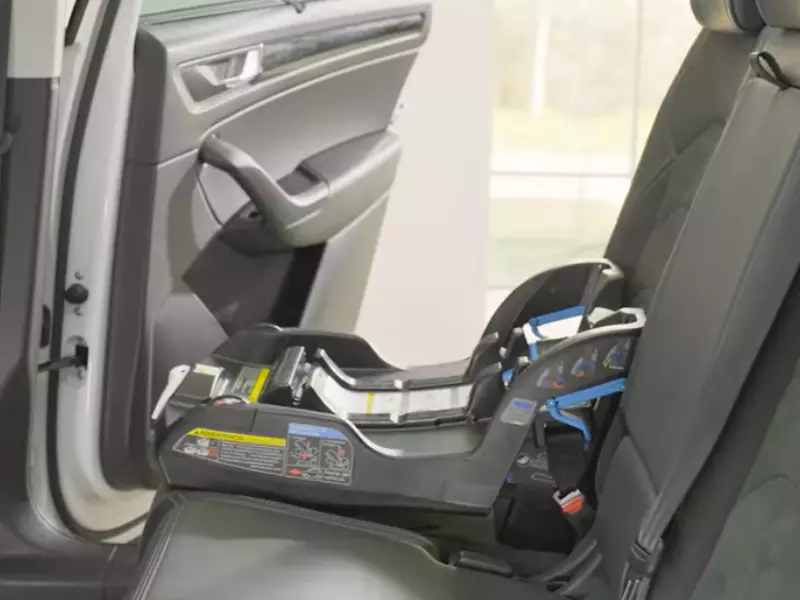
Key Benefits of Rear-Facing Car Seats for Children
Installing a rear-facing car seat for your child is one of the most effective ways to ensure their safety during a car journey. These car seats are specially designed to provide the utmost protection by focusing on the vulnerable areas of a child’s body, such as their head, neck, and spine.
Let’s explore some of the key benefits of rear-facing car seats:
- Reduces the Risk of Injury: Studies have shown that rear-facing car seats reduce the risk of serious injury in an accident by up to 75%. This is because the seat cradles the child’s body and absorbs the impact, preventing their head from being thrown forward forcefully.
- Supports Proper Development: Rear-facing car seats are designed to support the natural curvature of a baby’s spine and distribute the crash forces evenly. This helps protect their delicate neck and spinal cord, which are still in the early stages of development.
- Protects Against Whiplash: Whiplash is a common injury in car accidents where the head is forcefully jerked forward and backward. By positioning the child facing the rear of the vehicle, the car seat can minimize the risk of whiplash injuries, which can have long-lasting effects.
- Longer Use: Rear-facing car seats are suitable for infants and toddlers, providing a longer period of use compared to forward-facing seats. This allows you to keep your child in the safest position for as long as possible.
- Eases Transition to Forward-Facing: Experts recommend keeping children rear-facing until they reach the maximum height or weight limits of their car seat. By delaying the transition to forward-facing, you give your child more time to develop the necessary strength and maturity for the next stage.
It’s crucial to remember that rear-facing car seat installation is not just a legal requirement but also a moral obligation to protect our children from the devastating consequences of car accidents. By investing in a quality rear-facing car seat and following the manufacturer’s instructions for installation, you can provide your little one with the best possible protection and peace of mind during your journeys together.
Expert Tips For Proper Rear-Facing Car Seat Installation
Installing a rear-facing car seat is an essential step in ensuring your child’s safety while traveling in a vehicle. However, it can be a daunting task for many parents. To help you navigate the process with ease and confidence, we’ve gathered expert tips for a secure rear-facing car seat installation. From choosing the appropriate car seat to understanding the different types available and ensuring a secure installation in your vehicle, we’ll cover everything you need to know to keep your little one safe on the road.
Choosing the Appropriate Car Seat for Your Child’s Age and Weight
When it comes to selecting a car seat for your child, it’s crucial to choose one that is appropriate for their age and weight. Here are some expert tips to keep in mind:
- Consider your child’s age: The American Academy of Pediatrics (AAP) recommends keeping children in rear-facing car seats until at least the age of 2, or until they reach the maximum weight and height limits specified by the car seat manufacturer. Look for car seats that provide extended rear-facing capabilities to accommodate your child’s growth.
- Check weight and height limits: Each car seat has specific weight and height limits for rear-facing use. Ensure that your child’s weight and height fall within these limits before purchasing a car seat. This information can usually be found on the manufacturer’s website or in the car seat’s user manual.
- Consider convertible car seats: Convertible car seats offer the flexibility to be used in both rear-facing and forward-facing positions. Investing in a convertible car seat can provide long-term value and potentially save you money as your child grows.
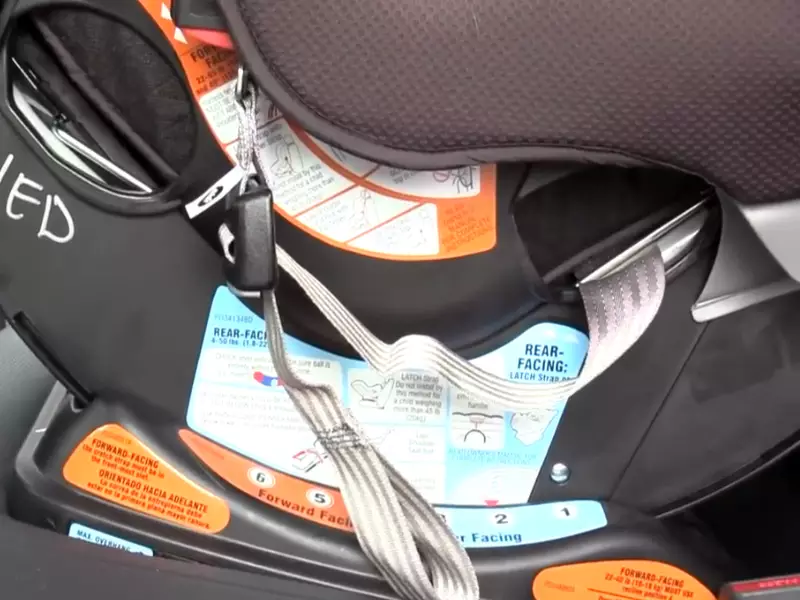
Understanding the Different Types of Rear-Facing Car Seats Available
There are several types of rear-facing car seats available on the market. Understanding the differences between them can help you make an informed decision:
| Type of Car Seat | Description |
|---|---|
| Infant car seats | This type of car seat is specifically designed for newborns and infants up to a certain weight limit. They often come with a detachable carrier that allows you to easily transport your baby without disturbing their sleep. |
| Convertible car seats | As mentioned earlier, these car seats can be used in both rear-facing and forward-facing positions. They offer the advantage of extended use and are suitable for infants and toddlers. |
| All-in-one car seats | These car seats are designed to accommodate children at various stages, from rear-facing infancy to forward-facing toddlerhood and even booster seat usage. They provide long-term use and may be a cost-effective option. |
Note: It’s important to carefully read the manufacturer’s instructions for the specific car seat you choose, as installation and usage guidelines may vary.
Ensuring a Secure Installation in Your Vehicle
Proper installation of a rear-facing car seat is crucial for your child’s safety. Follow these expert tips to ensure a secure installation in your vehicle:
- Read the user manual: Familiarize yourself with the user manual of both the car seat and your vehicle. They will provide specific instructions on how to install the car seat properly.
- Use the right installation method: There are different installation methods, such as using the vehicle’s seat belt or the LATCH system (Lower Anchors and Tethers for Children). Follow the instructions provided by the car seat manufacturer to choose the appropriate installation method for your specific car seat and vehicle.
- Ensure a tight fit: The car seat should be securely installed with minimal movement when properly installed. Check for any excessive movement and tighten the seat belt or LATCH system accordingly.
- Position the car seat at the correct angle: Most rear-facing car seats require a specific recline angle for proper installation. Use the level indicator on the car seat or follow the manufacturer’s instructions to achieve the correct angle.
By following these expert tips, you can ensure a proper rear-facing car seat installation, providing your child with the utmost safety and peace of mind during every journey. Remember to regularly check and adjust the car seat’s installation as your child grows.
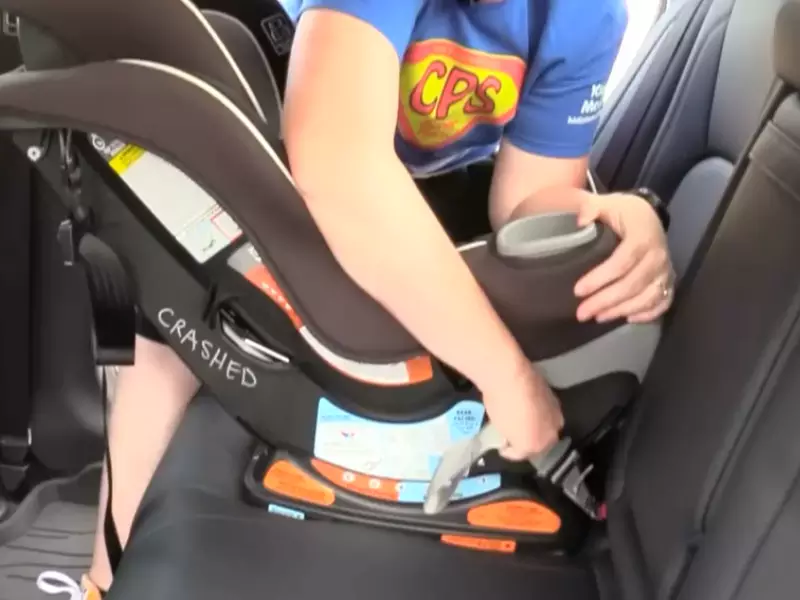
Common Mistakes And How To Avoid Them
When it comes to installing a Safety First car seat rear facing, it’s crucial to make sure you avoid common mistakes that could compromise the safety of your child. In this section, we will cover two major mistakes often made during the installation process: improper harness placement and adjustment, and incorrect angle of the car seat. We will also discuss how to properly install the car seat base to ensure maximum safety for your little one.
Improper Harness Placement and Adjustment
One of the most important aspects of installing a car seat rear facing is ensuring the harness is placed and adjusted correctly. Here are some common mistakes to avoid:
- Installing the harness too loosely: The harness should be snug against your child’s body, without being overly tight. To check if it’s secure, try pinching the straps near your child’s shoulders. If you can pinch any excess webbing, it’s too loose.
- Positioning the harness straps incorrectly: The straps should be threaded at the designated slots according to your child’s size. For rear-facing installation, the straps should go through the slots at or below your child’s shoulders.
- Not adjusting the harness as your child grows: It’s essential to regularly adjust the harness as your child grows taller. Check your car seat’s manual for instructions on when and how to adjust the harness straps.
By avoiding these common mistakes, you can ensure that the harness is properly placed and adjusted for your child’s maximum safety and comfort.
Incorrect Angle of the Car Seat
The angle at which you install the car seat rear facing is crucial for providing optimal protection to your child’s head and neck. Here’s how to avoid common angle-related mistakes:
- Installing the seat too upright: The car seat should be reclined at the recommended angle, usually specified in the car seat’s manual. This helps prevent your child’s head from flopping forward and potentially obstructing their airway.
- Using aftermarket products to adjust the angle: It’s important to avoid using additional products, such as pool noodles or rolled towels, to adjust the car seat’s angle. These makeshift solutions can compromise the seat’s integrity and safety.
- Leaving the car seat too reclined: While it’s important to ensure the car seat is properly reclined, excessive recline can increase the risk of side-to-side head movement during a crash. Follow the manufacturer’s instructions to determine the correct angle for your specific car seat.
Ensuring the correct angle of the car seat will help provide optimal protection for your child, keeping them safe and comfortable on every journey.
Inadequate Installation of the Car Seat Base
The car seat base serves as the foundation for safely securing your child’s car seat. Here are some common mistakes to avoid when installing the base:
- Failing to properly secure the base with the seat belt or LATCH system: Depending on your car seat and vehicle, you may use either the seat belt or the Lower Anchors and Tethers for Children (LATCH) system to secure the base. Regardless of the method, ensure that the base is securely attached to your vehicle.
- Not tightening the seat belt or LATCH straps adequately: After securing the base, make sure to tighten the seat belt or LATCH straps until there is no excessive movement. This ensures a snug fit and reduces the risk of the seat becoming loose in case of an accident.
- Ignoring the manufacturer’s instructions: Each car seat and vehicle may have specific installation instructions outlined by the manufacturer. It’s crucial to read and understand these instructions thoroughly to ensure proper installation and maximum safety.
By avoiding these common installation mistakes and following the manufacturer’s instructions, you can ensure that the car seat base is correctly installed and provides the necessary stability and security for your child.
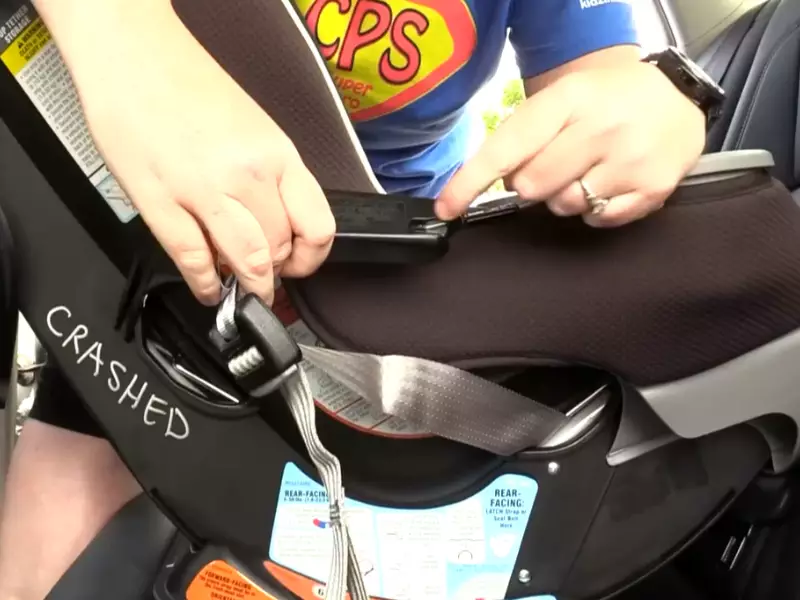
Step-By-Step Guide For Installing A Rear-Facing Car Seat
Installing a car seat properly is crucial to ensure the safety of your child while traveling. In this step-by-step guide, we will walk you through the process of installing a rear-facing car seat, which is recommended for infants and young toddlers.
Preparing your vehicle for installation
Before you start installing the car seat, it’s important to prepare your vehicle to ensure a secure fit. Follow these steps:
- Read your vehicle’s owner’s manual to locate the anchor points or seat belts designed for car seat installation.
- Clean the seat where the car seat will be placed to remove any dirt or debris.
- Check that the car seat base is compatible with your vehicle.
Installing the car seat base and securing it properly
Next, let’s move on to installing the car seat base:
- Position the car seat base in the back seat of your vehicle, ensuring that it is rear-facing.
- If using the seat belts to secure the car seat, thread the seat belt through the base and buckle it.
- If using the anchor points, locate them and attach the straps from the car seat base to the anchor points securely.
- Apply pressure to the car seat base with your knee or hand and tighten the seat belt or anchor straps to remove any slack.
- Confirm that the car seat base is securely installed by checking for minimal movement.
Adjusting the harness and checking for a snug fit
Now that the car seat base is properly installed, it’s time to adjust the harness and ensure a snug fit for your child:
- Place your child in the car seat and secure the harness over their shoulders.
- Adjust the shoulder straps to fit snugly against your child’s body. The straps should be at or below your child’s shoulder level.
- Make sure the chest clip is positioned at armpit level.
- Check that the harness straps are neither too loose nor too tight. You should be able to fit only one finger between your child and the straps.
Congratulations! You have successfully installed a rear-facing car seat following this step-by-step guide. Remember to always double-check the car seat’s installation and consult the manufacturer’s instructions for any specific guidelines.
Additional Safety Considerations
When it comes to installing a car seat, ensuring its safety is of utmost importance. While following the manufacturer’s instructions is crucial, there are additional safety considerations that parents should keep in mind. Regular inspection and maintenance of the car seat, understanding the importance of rear-facing until the recommended age or weight limit, and tips for traveling with a rear-facing car seat are key areas to focus on.
Regular inspection and maintenance of the car seat
Inspecting and maintaining your car seat on a regular basis is essential for your child’s safety. Here are a few inspection and maintenance tips to keep in mind:
- Check the straps and buckles for any signs of wear and tear. Replace them if necessary.
- Ensure that the car seat is securely installed and doesn’t wiggle or move excessively.
- Regularly clean the car seat according to the manufacturer’s instructions to remove any dirt or residue that may affect its performance.
- Keep an eye out for any recalls or safety notices regarding your specific car seat model.
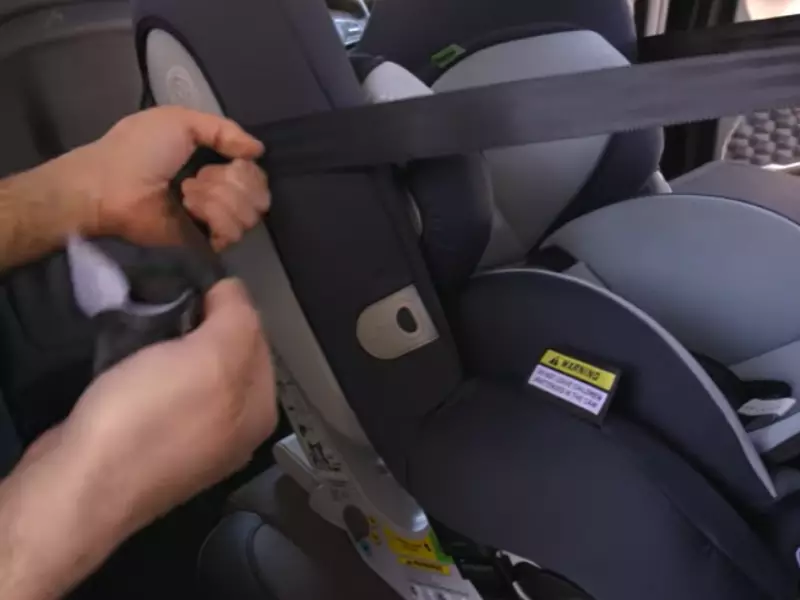
Importance of rear-facing until the recommended age or weight limit
Rear-facing car seats have been proven to be the safest option for infants and toddlers. It’s essential to understand the importance of keeping your child rear-facing until they reach the recommended age or weight limit set by the car seat manufacturer. Here’s why rear-facing is crucial:
- Rear-facing car seats provide optimal head and neck protection in the event of a collision.
- Children’s bodies are unable to withstand the same forces as adults, making rear-facing the safest position.
- Most car seat manufacturers recommend keeping children rear-facing until at least two years of age or until they reach the maximum weight or height limit allowed by the car seat.
Tips for traveling with a rear-facing car seat
Traveling with a rear-facing car seat may present unique challenges, but with the right preparation, it can be done safely and comfortably. Consider the following tips:
- Plan your journey in advance to allow for frequent breaks and ensure your child’s comfort.
- Invest in a mirror that allows you to see your child’s face while driving.
- Secure any loose items in the car to prevent them from becoming projectiles in the event of an accident.
- Remember to adjust the straps and harness properly each time you use the car seat to ensure a secure fit.
By following these additional safety considerations, you can ensure that your child’s car seat is correctly installed and maintained, and that they remain rear-facing until the recommended age or weight limit. Happy travels!
Expert Answers To Frequently Asked Questions
Welcome to this expert Q&A session on how to install a Safety First car seat rear facing. In this section, we will be addressing some common concerns and queries parents often have when it comes to installing their car seats. We have compiled answers from our expert team to help you navigate through the process with ease and confidence.
When should I transition my child to a forward-facing car seat?
Transitioning from a rear-facing car seat to a forward-facing one is an important step in ensuring your child’s safety. It is recommended to keep your child in a rear-facing car seat for as long as possible, following the guidelines provided by the car seat manufacturer.
Experts generally suggest keeping your child rear facing until they reach the maximum height or weight limit allowed by the car seat. As a general guideline, this typically means keeping your child rear facing until around the age of two or until they have outgrown the rear-facing height and weight limits of their specific car seat model.
Is it safe to install a car seat using the LATCH system?
Yes, the LATCH (Lower Anchors and Tethers for Children) system provides a safe and secure method for installing car seats. It is important to note that not all car seats and vehicles are compatible with the LATCH system. You should consult both your car seat manual and your vehicle’s manual to ensure proper use.
When installing your car seat using the LATCH system, there are a few key points to keep in mind. Make sure the LATCH connectors are securely attached to the designated anchor points in your vehicle. Pull the straps tight to remove any excess slack. It is also crucial to follow the weight limits specified by the car seat manufacturer to ensure your child’s safety.
What should I do if my vehicle does not have a LATCH system?
If your vehicle does not have a LATCH system, you can still install a car seat safely using the vehicle’s seat belts. Most car seats come with clear instructions on how to properly secure them using the seat belts. It is crucial to follow these instructions carefully to ensure a secure installation.
When installing with seat belts, remember to lock the seat belt to prevent excessive movement. Different vehicles may have different methods for achieving this, such as using a locking clip or following the locking mechanism built into the seat belt. Refer to your vehicle’s manual for instructions on how to lock the seat belt.
If you are unsure about the installation process, it is always a good idea to seek assistance from a certified child passenger safety technician. They can provide personalized guidance and ensure your car seat is installed correctly, maximizing your child’s safety on the road.
Frequently Asked Questions For How To Install A Safety First Car Seat Rear Facing
Does A Rear Facing Car Seat Need To Be Anchored?
Yes, a rear-facing car seat needs to be anchored for proper safety.
How Do You Install A Rear Facing Car Seat Latch?
To install a rear facing car seat latch, follow these steps:
1. Attach the latch anchors to the vehicle’s anchor points.
2. Route the straps of the car seat through the latch guides.
3. Connect the latch hooks to the latch anchors.
4. Tighten the straps to secure the car seat in place.
5. Double-check the installation for a snug fit.
Can Rear Facing Car Seat Go Behind the Driver Or Passenger?
Yes, rear facing car seats can go behind either the driver or the passenger in the vehicle.
What Is The Height Limit For Rear Facing Safety First Car Seat?
The height limit for Safety First rear-facing car seats is typically determined by the specific model. Please refer to the user manual or product specifications for the exact height limit recommended by the manufacturer. It is important to follow these guidelines to ensure your child’s safety.
Conclusion
Installing a Safety First car seat rear facing is crucial for the safety of your child. By following the step-by-step guide provided in this blog post, you can ensure a secure and comfortable ride for your little one. Remember to double-check the seat’s installation and consult the manufacturer’s instructions for any specific guidelines.
By prioritizing your child’s safety, you can have peace of mind every time you hit the road together. Happy travels!
